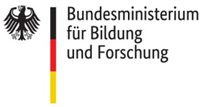”Vivid” images for improved quality assurance of steel components
Press Release / April 30, 2020:
Parents-to-be are familiar with them – ultrasound images of their unborn child: Pin sharp and brilliant, they convey an almost photo-realistic level of detail and a deep impression of the child in the womb. The Fraunhofer Institute for Nondestructive Testing IZFP is researching and developing a technology to bring this kind of vivid images to industrial applications: As part of a project funded by the German Federal Ministry of Education and Research (BMBF), scientists of the research institute in Saarbrücken have started to develop a novel imaging method that will generate vivid images of microstructural changes and stress distributions in real time. This technology will provide significant information on the load capacity and lifetime of steel components in a completely new way.
Material properties affect the load capacity and service life of steel components. Particularly in the case of safety-relevant components, their reliable and fast quality assurance with optimized real-time capacity is indispensable for the prevention of unwanted changes in the microstructure and unwanted residual stresses in the material. Such alterations can already arise during production, but also after completion and commissioning. Due to their negative influence on product quality and suitability for use, they are highly relevant for both operational safety and added value.
Up to now, there is no technology for the fast and nondestructive determination of microstructure and residual stress distributions for industrial quality assurance in case of lateral resolution or high depth resolution are required. For safety-relevant components of different size scales, e.g. in the automotive and railway industry or for power plant components, there is a considerable need in this respect.
”The direct objective of this research project comprises the development, testing and validation under laboratory conditions of a novel imaging method for nondestructive material analysis by means of magneto-optical sensor technology. The innovative aspect of the project relates to the combination of the current state of magneto-optics with that of micromagnetics and thus to the application of optical technologies in the field of quality assurance,” explains Dr. Madalina Rabung, responsible project leader and scientist at Fraunhofer IZFP. With the help of this method, a nondestructive magneto-optical system will be developed and tested that will be able to visualize the distribution of microstructure and stresses over large component surfaces down to a depth of approx. 1 mm below the surface. The near-surface spatial resolution is better than 50 μm, and the method will generate and record the images within a few seconds.
The ”BiWa-MOS” project – imaging material analysis using magneto-optical sensor technology for rapid quality assurance of steel components – deals with the development of nondestructive methods for quality assurance and condition assessment of steel and cast iron components. By the approach of an imaging method for material analysis based on magneto-optical procedures, the brilliance of vivid images from unborn babies in the womb shall be realized by other means for use in industrial ambience.
Immediate visualization of the surface distribution of material properties
The ability to extract and process parameters from magneto-optical images for immediate visualization of the surface distribution of material properties represents a milestone for the transition of classical nondestructive testing to intelligent, cognitive sensor systems. In this context, the development of material innovations within the framework of the Industry 4.0 concept plays a decisive role. ”As a completely new method for spatially resolved material analysis, our process approach utilizes optical technologies for quality assurance in product development and component monitoring,” Dr. Rabung continues. This new, real-time capable method for the visualization of microstructure changes and stress distributions in highest quality is the basis for nondestructive real-time imaging material analysis, for which an enormous scientific and, perspectively, also economic potential exists.
The field of nondestructive magnetic materials characterization has been and is significantly improved by Fraunhofer IZFP: For more than 30 years the institute has been engaged in the indirect determination of mechanical properties (hardness, strength, etc.) using magnetic effects (e.g. magnetic hysteresis, Barkhausen noise, eddy currents).
Project Volume: approx. 253,000 Euro
Project Term: 1 March 2020 to 28 February 2021
Support Initiative »Wissenschaftliche Vorprojekte (WiVoPro)«
(Scientific Pre-Projects)

 Fraunhofer Institute for Nondestructive Testing IZFP
Fraunhofer Institute for Nondestructive Testing IZFP 